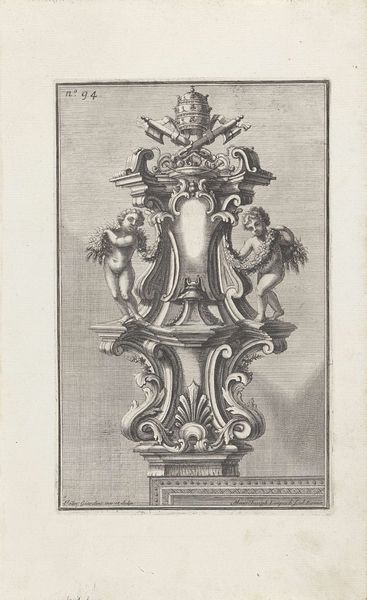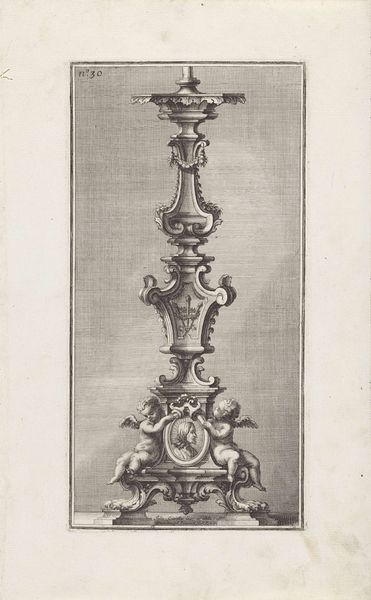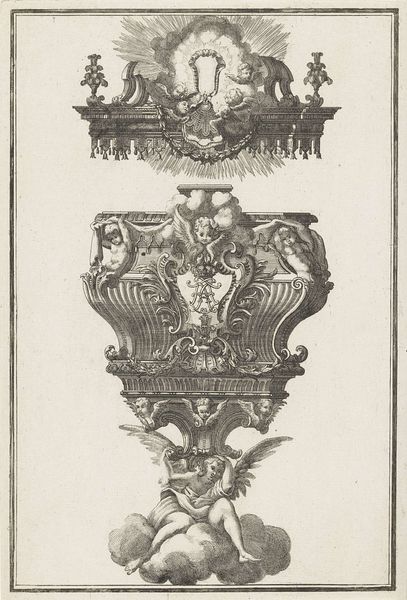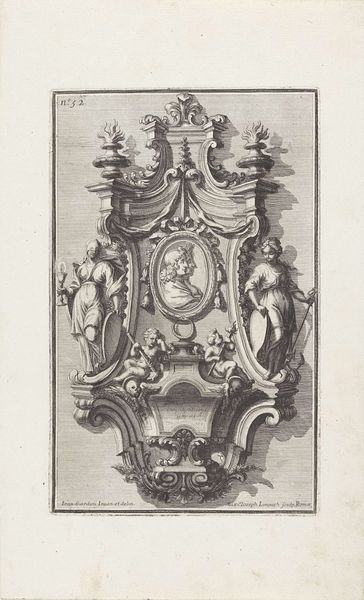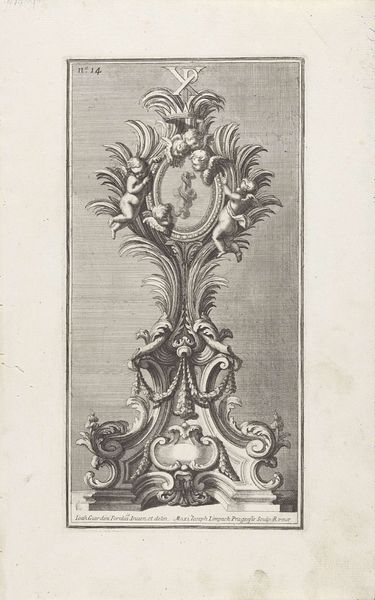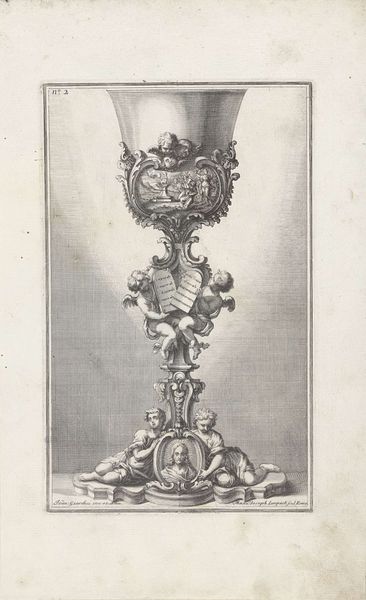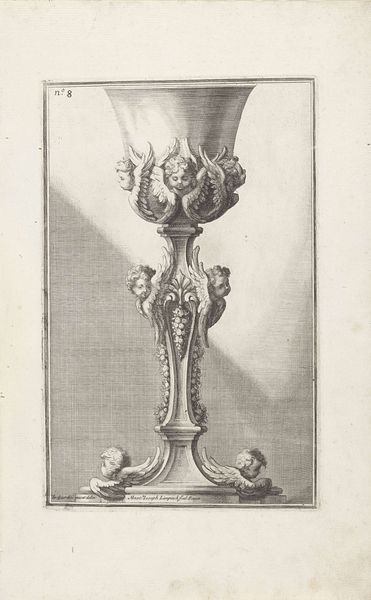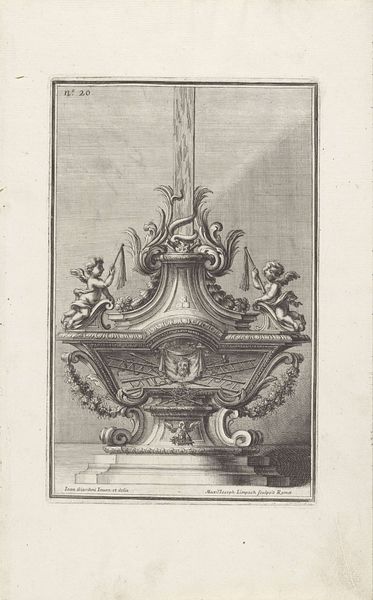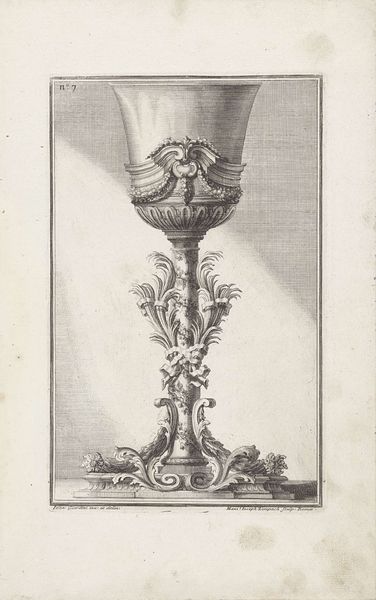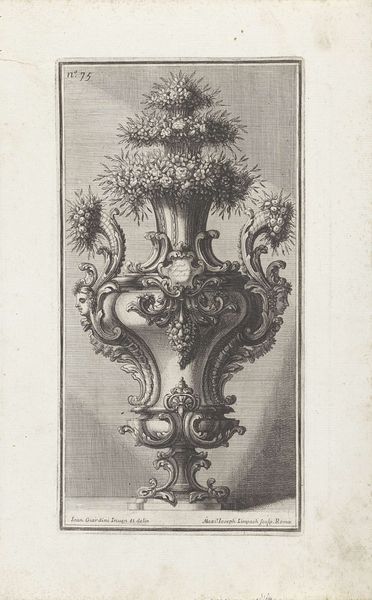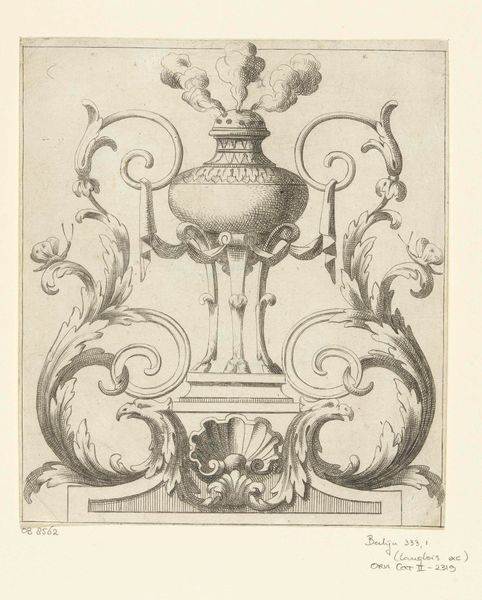
metal, engraving
#
baroque
#
metal
#
old engraving style
#
figuration
#
engraving
Dimensions: height 300 mm, width 154 mm
Copyright: Rijks Museum: Open Domain
Curator: Before us, we have "Candlestick with Seven Candles and Two Putti", an engraving executed in 1714 by Maximilian Joseph Limpach. The print, rendered in metal engraving, offers a splendid example of Baroque aesthetics. What are your immediate thoughts? Editor: It feels incredibly opulent, even excessive. All that ornate metalwork, those cherubic figures struggling under its weight… it’s the visual equivalent of rich velvet cake, maybe a bit heavy-handed for my taste. But fascinating. Curator: Indeed. Note the structural arrangement: the composition ascends in distinct tiers, from the cherubic base, symbolizing, perhaps, divine inspiration, to the ornate candlestick holder aloft. Each tier elaborates on a central motif, showcasing Baroque’s signature embrace of complex detail. Editor: It's as though Limpach wanted to show us how much detail he could possibly cram onto one surface. The symmetry is almost suffocating, isn’t it? Do you think the weight of those clouds beneath the putti affects how the whole piece reads? I find the clouds so strange. Curator: The clouds serve both an aesthetic and symbolic function, I believe, lifting the material candelabra into the realm of the spiritual. The seven candles themselves are replete with numerological significance; potentially representative of the seven virtues, or perhaps the seven sacraments. Consider too, how the use of engraving—the very precise, deliberate lines— contributes to the sense of order and rationality amidst all the exuberant decoration. Editor: Seven, yes, that feels spiritually important… and looking closer, it’s funny, how the smoke from the candles is more energetic, alive, than the cherubs supporting all that metal! Those poor putti. I like the visual paradox there; ephemeral versus seemingly eternal materials and forms. Curator: It certainly invites consideration. Limpach successfully synthesizes disparate visual elements—the ethereal smoke, the solid metal, and the angelic figures—into a cohesive statement on divinity and design. Editor: So, even though it overwhelms at first glance, there’s a kind of calculated drama, everything balanced… Curator: Precisely. It’s an elaborate, Baroque balancing act. Editor: It leaves me wondering if that type of design can ever truly balance utility and symbolic burden... Anyway, I enjoyed reconsidering it! Curator: A sentiment I heartily share, especially after our conversation. Thank you for your insights.
Comments
No comments
Be the first to comment and join the conversation on the ultimate creative platform.

